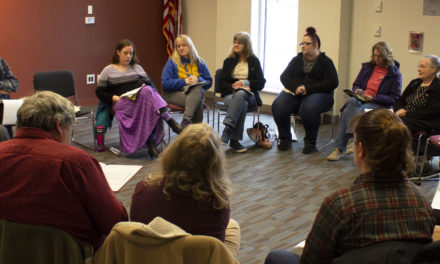Delaware State and Social Service workers attribute the increasing rates of homelessness to both the high cost of living and to low wages.
People making minimum wage have a difficult time affording rental property, said Valerie Bradshaw, administrator of the State Service Center in Middletown Delaware.
“What we know for a fact is rental cost in Delaware is astronomical compared to wages,†she said. “Anyone who is employed, if they’re working on a minimum wage job, it’s going to be very hard for them to afford rent in Delaware.â€
This is also true around the country.
A national study showed that any increase in rent is connected to homelessness. According to the Department of Commerce, a $100 increase in rent is associated with an increase in homelessness of between 6 and 32 percent.
Rent has increased 16-26 percent nationwide since 2012.
Bradshaw, who is also part of the Mayor’s task force to end homelessness said Delaware officials are “beginning to peel the layer back.â€
Senior Social Service Case Manager, Dorian Baker agreed that the cost of housing is a huge factor in the increase of homelessness.
“Within our pilot program, we have social workers at the library,†she said. “We assist communities in helping their clients apply for benefits such as food benefits, Medicaid, cash assistance, purchase of care while they are at their facilities.â€
Baker works to ensure that the underserved receive benefits, even without a permanent address.
Many homeless receive benefits, social security or have a job, but the high cost of housing leave many out on the streets or in hotels/motels, with no permanent address. She also said that because so many people are homeless and trying to get housing through social services, people can be on a waiting list for as long as two years.
Baker is a part of the Community Partner Support Unit, a program that allows homeless people to get help receiving benefits, completing resumes, and other services.
In Delaware, people need some sort of identification, but do not need a permanent address to receive benefits such as food and Medicaid.
A homeless person may use the addresses of a state service center address or any daytime center – such as Dover Interfaith – where the homeless can wash their clothes, shower, eat and receive other assistance – to receive benefits in the mail from social services.
Along with social services, Dover provides services for the homeless.
Dover has seven shelters for men, women and children in the area, three food pantries, four places that assist with bills, seven places that assist with jobs, three places that offer counseling, three places that offer educational tutoring, four places that offer case management, and one veteran service center.
Code purple is an emergency shelter open when temperatures go below 32 degrees at night for men, women and children. Code purple has four shelters for men and one for women and children.
Dover Interfaith Mission for Housing Resource Center and Hopes & Dreams Resource Center offer services for men, women and children as well. They allow clients to come in and shower, do laundry, provide food, case management, bible studies, as well as assistance with receiving social service benefits and job searching.
Additional Statistics:




Graph by: Christian Bailey/Â Information from: working families.org






